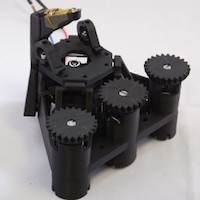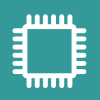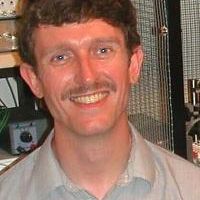Many tasks in biology require tiny, accurate motion – achieved with expensive hardware. We have used inexpensive, 3D printed parts to make high performance mechanisms for low cost science. Our best example is a microscope small and cheap enough to be left in an incubator or fume hood for days or weeks. This will enable new science, for example by observing cells as they grow in an incubator.
We will improve this microscope’s imaging capabilities (adding fluorescence and phase contrast) and demonstrate its use in an incubator. We will also show that printed mechanisms can be used for other tasks, for example the mechanical manipulation of micropipettes for microinjection or patch clamping.
The Idea
 Optical microscopy is fundamental to biology, and relatively high performance microscopes can now be made very cheaply. Positioning the sample and focusing the objective, however, is difficult without expensive translation stages: a microscope is mostly mechanics. Many other tasks in biology require tiny, accurate motion – achieved with expensive hardware such as mechanical micromanipulators and piezoelectric actuators. We have used inexpensive, 3D printed parts to make high performance mechanisms for low cost science, and we propose to apply this technology to problems in synthetic biology.
Optical microscopy is fundamental to biology, and relatively high performance microscopes can now be made very cheaply. Positioning the sample and focusing the objective, however, is difficult without expensive translation stages: a microscope is mostly mechanics. Many other tasks in biology require tiny, accurate motion – achieved with expensive hardware such as mechanical micromanipulators and piezoelectric actuators. We have used inexpensive, 3D printed parts to make high performance mechanisms for low cost science, and we propose to apply this technology to problems in synthetic biology.
Our best example is a microscope small and cheap enough to be left in an incubator or fume hood for days or weeks. This will enable new science, for example by observing cells as they grow in an incubator – experiments which are currently impossible to do on a large scale due to the time and resources required. We will improve this microscope’s biological imaging capabilities (adding fluorescence and phase contrast) and demonstrate its use in an incubator at the Light Microscopy Facility in the Cancer Research Institute. This will then allow us to study phototoxicity by monitoring cultures of cells over several days.
Plastic flexure technology could also reduce the cost of mechanical micromanipulators by three orders of magnitude, opening up a range of possibilities. When combined with open-source Arduino microcontrollers, it is even possible to automate these devices for around £100. We will develop and test plastic micromanipulators for microinjection or electrophysiology, and assess their precision and stability. We will also investigate the use of ABS plastic as a potential replacement for PLA, as it has the potential to further improve the performance of printed mechanisms.
Finally, these low cost devices present obvious opportunities for science outreach, and this funding would enable us to create a class set of microscopes that can be taken (or lent) to schools as part of outreach activities, along with some fixed samples and lesson plans for easily-prepared specimens.
The Team
Dr Richard Bowman
Richard is a Physics Research Fellow in the Nanophotonics Centre at the Cavendish Laboratory and has a background in optical tweezers and microscopy.
Dr Stefanie Reichelt
Stefanie is Head of Light Microscopy at Cancer Research UK.
Dr Hugh Matthews
Dr Hugh Matthews is Reader in Sensory Physiology and his research interests include phototransduction and olfactory transduction. Calcium homeostasis in vertebrate photoreceptors and olfactory receptors, and its role in modulating their electrical responses. Light-induced calcium release within the photoreceptor outer segment.
Prof Jeremy Baumberg
Jeremy Baumberg is a leader in nanoscience and nanotechnology, working for much of his career at the interface between academia and industry. He is Professor of Nanophotonics and Director of the Nanophotonics Centre.
Project Outputs

Project Report
Summary of the project's achievements and future plans

Project Proposal
Original proposal and application

OpenFlexure Scope DocuBricks
Full open source documentation for the hardware build on the DocuBricks site (also supported by SynBio Fund.

OpenFlexure Scope on github
Design files and documentation for the OpenFlexure Scope.

Open Access Paper
Sharkey, James P., et al. "A one-piece 3D printed flexure translation stage for open-source microscopy." Review of Scientific Instruments 87.2 (2016): 025104.
Project Impact and Further Activities
- Waterscope: Richard Bowman and co-founders started WaterScope, a social enterprise developing the microscope for water contamination testing in developing countries. They have since gone on to win several business and enterprise awards and obtain funding for a full-time employee and field work in Tanzania, where local partner STICLab have started printing the microscopes in-country. The team now also sell microscope kits.
- OpenScope: The Cambridge-JIC iGEM 2015 team built on the Open Flexure scope with their OpenScope project, redesigning the stage for inverted microscopy and fluorescence. View their documentation on the iGEM wiki and follow the progress of the project via the Cambridge University Synthetic Biology Society, founded in 2015 to continue the work of the iGEM team and offer up opportunities for student led engagement with synthetic biology projects.


